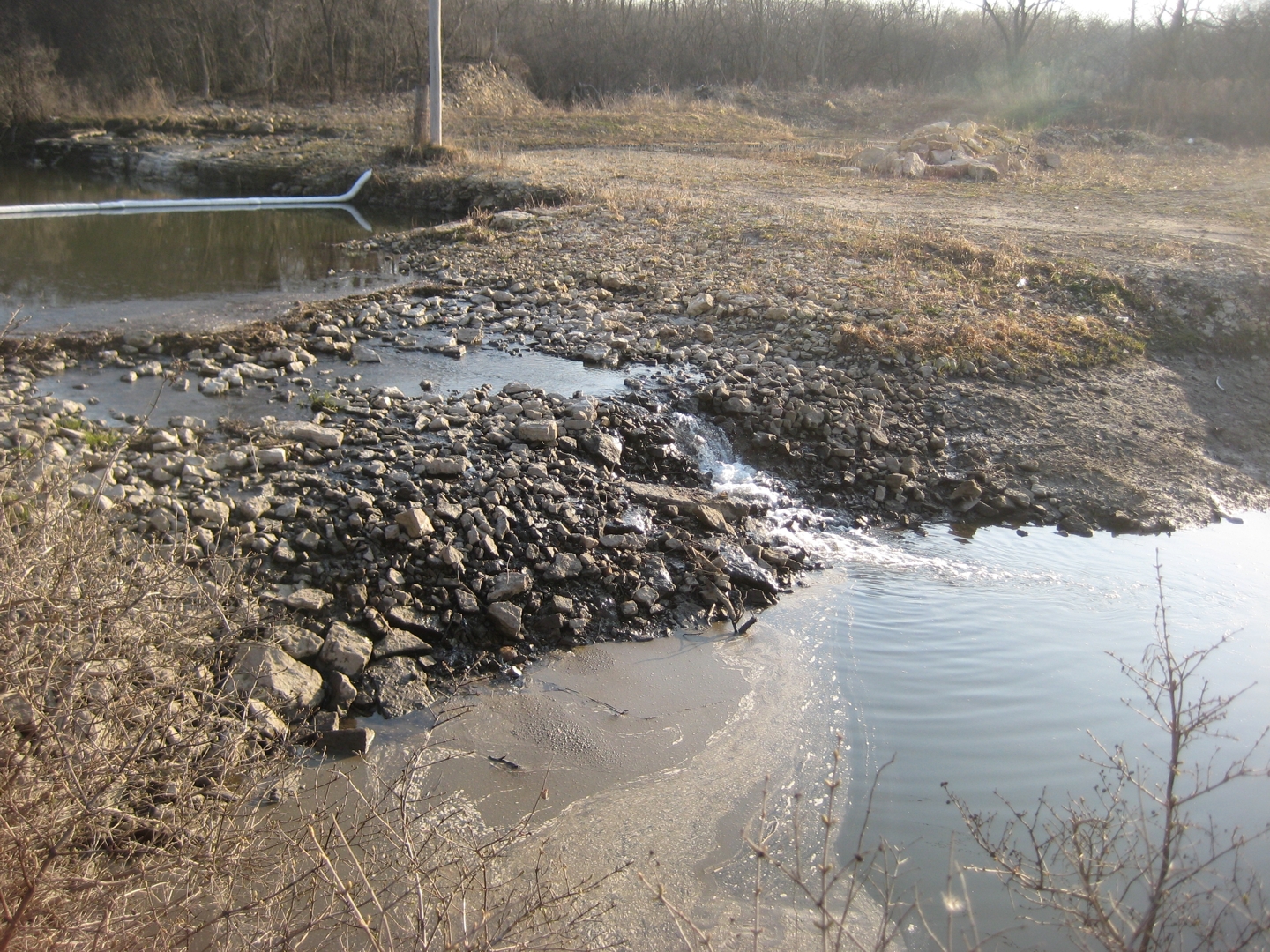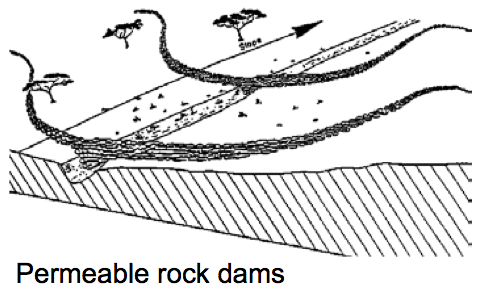वाटर पोर्टल / वर्षाजल संचयन / भूजल पुनर्भरण / पारगम्य चट्टान बांध
< वाटर पोर्टल / वर्षाजल संचयन | भूजल पुनर्भरण| |
|
|
|
|
|
|
|
|

पारगम्य चट्टान बांधों का निर्माण घाटी लंबी, कम ऊंचाई वाली चट्टानों की दीवार से होता है, जिनके शिखर घाटी के तल के किनारे-किनारे समान ऊंचाई लिये होते हैं. यह तटीय धाराओं को फैलने देता है. यह बाढ़-जल कृषि तकनीक है, जो बाढ़ के पानी को फैलने देता है और नियंत्रित भी करता है ताकि फसल की वृद्धि ढंग से हो सके, साथ ही यह कटाव को भी रोकता है. पारगम्य चट्टान बांध को 'सीढ़ीदार वाडी' का एक रूप माना जा सकता है. हालांकि सीढ़ीदार वाड़ी का प्रयोग अमूमन अधिक शुष्क क्षेत्रों में जलधाराओं के भीतर संरचनाओं के लिए होता है.
पारगम्य चट्टान बांध एक अधिक प्रभावी और लोकप्रिय तकनीक प्रदान करते हैं, खास तौर पर गैबियन के मुकाबले नाले के कटाव के बेहतर नियंत्रण के मद्देनजर. नाले के प्रभावी नियंत्रण के अतिरिक्त पारगम्य चट्टान बांधों की एक खासियत और है, इसमें बांधों के पीछे उगने वाली फसलों की पैदावार काफी बढ़ जाती है.
बांधों के पीछे गाद के जमाव के जरिये नालों का जीर्णोद्धार हो जाता है, गहराई बढ़ जाती है और मिट्टी की गुणवत्ता तत्काल बेहतर हो जाती है, नतीजन बांधों के पीछे की मिट्टी उपजाऊ हो जाती है. फसलों के लिए नमी की मात्रा में सुधार होता है. पारगम्य चट्टान बांधों के साथ लगी भूमि में चारे की पैदावार 1 टन / हेक्टेयर से बढ़ कर 1.9 टन / हेक्टेयर तक हो जाती है. इन बांधों के पीछे लगाए जाने वाली अन्य फसलें हैं (भारी मिट्टी पर) चावल, बाजरा और मूंगफली.
उपयुक्त परिस्थितियां
Permeable rock dams for crop production can be used under the following conditions:
- Rainfall: 200–750 mm; from arid to semi-arid areas.
- Soils: All agricultural soils—poorer soils will be improved by treatment.
- Slopes: Best below 2% for most effective water spreading.
- Topography: Wide, shallow valley beds.
This system is generally used across relatively wide and shallow valleys. This technology is appropriate for regions with less than 700 mm annual rainfall, where gullies are being formed in productive land. This is particularly suited to valley bottoms with slopes of less than 2%, and where a local supply of stones and the means to transport them is available.
| Advantages | Disadvantages |
|---|---|
| - Increased crop production and erosion control as a result of the harvesting and spreading of floodwater. - Improved land management as a result of the silting up of gullies with fertile deposits. |
- Reduced runoff velocities and erosive potentials. - High transportation costs. |
Construction, operations and maintenance
Each dam is usually between 50 and 300 m in length. The dam wall is usually 1 m in height within a gully, and between 80 and 150 cm in height elsewhere. The dam wall is also flatter (2:1) on the down slope side than on the upslope side (1:2), to give better stability to the structure when it is full. A shallow trench for the foundation improves stability and reduces the risk of undermining. Large stones are used on the outer wall and smaller stones internally.
Costs
A typical rock dam providing erosion control and water supplies to plots of 2 to 2.5 ha costs about US$500 to 650 for transportation of material and about 300 to 600 person days of labour.
Field experiences
Several organisations have been involved in the promotion of this technology in Burkina Faso. The structures are labour-intensive and require provision of mechanised transport for moving the quantities of stone required. Villages that request application of this technology usually pay half of the transportation costs, contribute all of the labour, and manage the dam. Where rock dams have been installed, a spill over into the construction of smaller rock dams by individual land owners has been seen.
Governmental or agency involvement is comprised primarily of provision of technical advice needed during the construction stage. More recently, villages have been asked to form a land resource management committee to serve as a focal point for coordination of land and water resource management activities with extension agents. This committee draws up a land use management plan that provides the planning context for dam construction and other environmental protection projects.
Manuals, videos and links
Acknowledgements
- Rufino, L., Water Conservation Technical Briefs: TB 2 – Rainwater Harvesting and Artificial Recharge to Groundwater. Sustainable Agriculture Initiative (SAI). August 2009.
- Awulachew, Seleshi Bekele (IWMI); Lemperiere, Philippe (IWMI). Water harvesting and development for improving productivity. Tulu, Taffa (Adama University). January, 2009.
